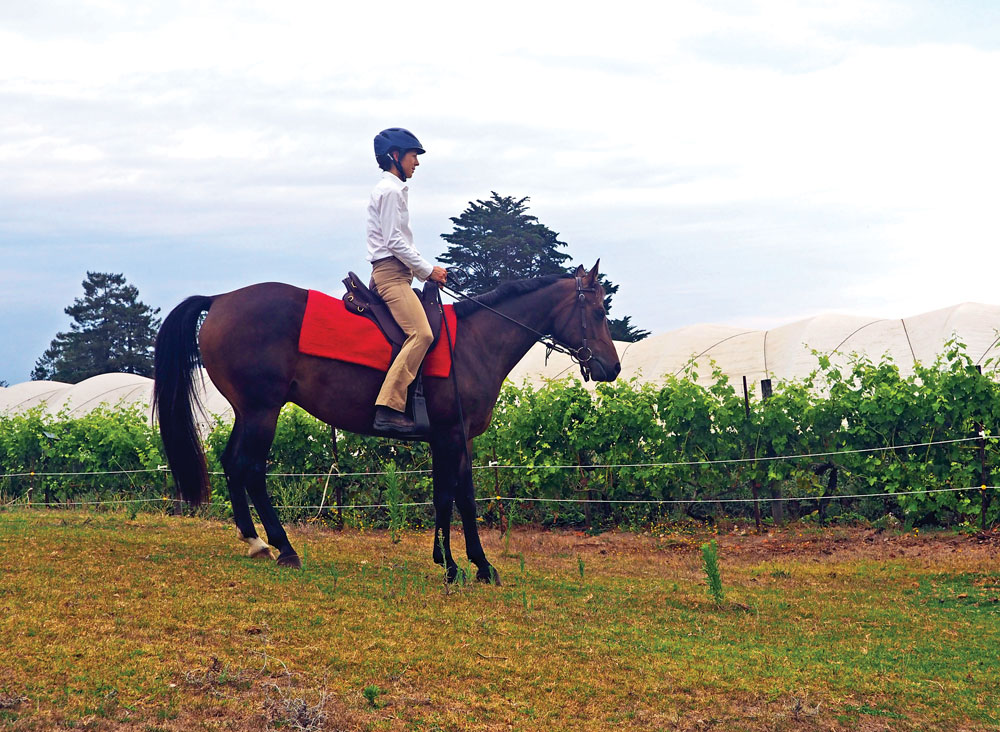Read on to learn more about riding quick halts on a horse down a hill.

In other words, messages coming from this area of the horse’s body will determine whether his hindquarters can engage well or not. If a horse is constantly falling forward with his chest or pushing weight down into the base of his neck, he will be limited to stiff strides and a rigid back.
On the other hand, if he lifts the base of his neck while traveling forward, he creates a reflexive reaction systemwide that lightens his forehand and allows his hind legs to swing forward and balance under his body.
Use the following exercise to target these sensory nerves at the base of your horse’s neck. You can do this exercise nearly anywhere you have a hill. Use whatever space you can find, whether it’s a driveway, a paddock, or section of trail.
Each time you stop your horse, maintain a light, steady contact with the bit. It’s important that your horse stays in a good posture rather than sticking out his neck or lifting his head.
As soon as you ask for the halt, you want him to stop quickly and not stagger forward a few more steps. This quickness will cause him to sink downward with his rump and hold the flexion of his hind legs so that he can lighten his front end.
Sometimes riders ask what they should do with their seats during downhill riding, whether to lighten their weight in the saddle or to rock backwards and sit heavier. As a general rule, aim to keep your pelvis in a neutral position, neither deepening or lightening your weight in the saddle. Your upper body should be parallel with the trees around you.
Quick Halts While Riding A Horse Down Hill
- Develop a brisk walk on light rein contact traveling straight down a hill.
- The hill should be adequately sloped so that you can feel the horse working his way down it, but not so steep that he is scrambling.
- After 10 strides or so, ask for an abrupt halt transition. Be sure your horse stands straight and does not swing his hindquarters to the side.
- Stand immobile for five seconds, then proceed to walk again. Remain perfectly straight.
- Repeat, walking 10 strides and making an abrupt halt.
This article originally appeared in the September 2018 issue of Horse Illustrated magazine. Click here to subscribe!






